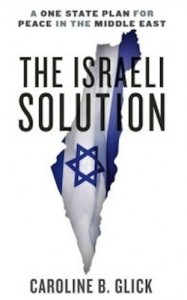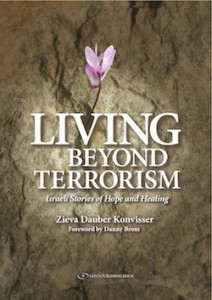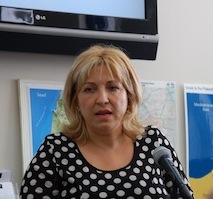While I have a very good Jewish background, enhanced by the hundreds of books I have reviewed over the years, I am, by no means, a scholar. However, when I heard about The Status of Women in Jewish Law: Responsa by Rabbi David Golinkin (Centre for Women in Jewish Law at the Schechter Institute of Jewish Studies, 2012), I wanted to read and review it because there are a number of issues – that appear both in the news and in other books I’ve read – that are expounded and discussed by Golinkin.
When I read Rashi’s Daughters, for example, I was intrigued by the author, Maggie Anton, writing that the daughters laid tefillin, studied Talmud and commented on their father’s responsa. The violent, aggressive behavior of certain Orthodox men and women toward the Women of the Wall, who have tried for more than 25 years to have a respectful minyan on Rosh Chodesh each month, observing their personal traditions, further motivated my reading of this book.
Rabbi Reuven Hammer, former president of the International Rabbinical Assembly, in one of his columns last year in the Jerusalem Post, wrote: “I cannot help but wonder what the problem is with the desire of some women to wear tallitot, tefillin and read from the Torah at the Western Wall. I am further amazed at the extreme statements made by the rabbi in charge of the site and by other leaders of the Charedi (ultra-Orthodox) community calling on their followers to come out and protest, as well as by the silence of moderate Orthodox authorities on this issue. I cannot believe that they really think that what these women are doing is in violation of Jewish law.
“Surely they know as well as anyone else that all of this is permitted.
“Women may not be required to do these things within traditional halachah [Jewish law], but nowhere are they prohibited from doing them, any more than they are prohibited from sitting in a sukkah!”
Hammer continued: “My only conclusion is that this … has nothing to do with Jewish law and nothing to do with the sanctity of the Wall and nothing to do with offending others, and everything to do with protecting an insular way of life…. These groups have every right to want to live that way…. But they have absolutely no right to force their practices upon others and to make the totally false claim that what they say represents the official position of traditional Judaism. It simply does not.”
He noted, “The sages in the second century CE exempted [women] from certain mitzvot, but did not prohibit them from performing them. There is no excuse for us, nearly 2,000 years later, forbidding what neither the Torah nor the sages forbade. Let us put an end to all this fuss and support the right of women to perform these mitzvot within the framework of traditional Judaism.”
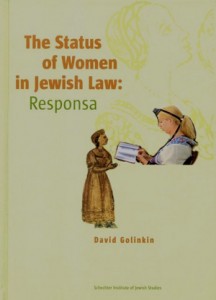 In Golinkin’s book, we learn that, while there are Orthodox rabbis who have made innovations for women, many Orthodox rabbis ignore not only non-Orthodox rulings on women in Judaism but also Orthodox rulings. We also learn that change isn’t a linear process between or within denominations.
In Golinkin’s book, we learn that, while there are Orthodox rabbis who have made innovations for women, many Orthodox rabbis ignore not only non-Orthodox rulings on women in Judaism but also Orthodox rulings. We also learn that change isn’t a linear process between or within denominations.
In the book’s introduction, “The Participation of Jewish Women in Public Rituals and Torah Study,” Golinkin surveys 41 events between 1845 and 2010, regarding women in Judaism. He finds that changes did not necessarily move from Reform to Conservative to Orthodox. For example, the bat mitzvah ceremony, credited to Conservative Rabbi Mordecai Kaplan in 1922, was preceded by rabbis in Italy, France and Baghdad and by Reform Rabbi Yechezkel Karo in 1902. Women have been ordained by the Reform movement in the United States since 1972, but Regina Jonas, who could not be called Reform, was ordained as a rabbi in Germany in 1935. Women have had aliyot since 1893, including Henrietta Szold in 1922, but it was not until 1995 that 88 percent of Conservative synagogues allowed aliyot for women. Orthodox rabbis began to allow separate women’s prayer groups in the 1970s but some Conservative rabbis had done so since 1949. In broad strokes, main efforts to change women’s roles in Reform Judaism lasted from 1846 to 1972; Conservative, from 1874 to 2001; and Orthodox, from 1978 to 2010.
Golinkin writes, “The tension between halachah and modernity has caused, is causing and will continue to cause division and disagreement within the Jewish people.”
He also notes, “The status of women in halachah has begun to cause division between Modern Orthodox and the Charedi (ultra-Orthodox) camp in Israel and abroad.”
He then lists nine approaches to changing halachah: 1) those who oppose any change in Judaism; 2) opposition specifically to changes in the synagogue; 3) acknowledging equal status between men and women, expressing it through different roles and mitzvot; 4) willingness to accept certain changes so as to not drive women from Judaism; 5) change within the framework of traditional halachah; 6) adjusting discriminatory halachot according to contemporary times; 7) changing halachah with equality for women; 8) feeling halachah is not binding, and men and women are equal in Judaism; and 9) suggesting a halachic revolution.
The remaining 15 chapters of The Status of Women in Jewish Law consist of responsa to critical questions. In each case, Golinkin surveys the rabbis who wrote responsa on a particular issue – for and against – and then concludes with what he terms “practical halachah.” There is a complete bibliography after each responsa’s conclusion. In brief, they are:
Responsa 1: women and tefillin. In Golinkin’s view, the responsa show “ample halachic justification” for allowing women to wear tefillin, as long as they are worn with “the same devotion and halachic requirements which apply to men.”
Responsa 2: women and singing. Golinkin writes, “… there is no general prohibition against women singing in classic Jewish law based on the Talmud and subsequent codes and commentaries until the early 19th century.” And there is “no halachic justification for anyone walking out when women sing … it is forbidden to walk out, in order not to insult the female performers.”
Responsa 3: women in the minyan and as shlichot tzibbur (prayer leaders). Golinkin concludes that women may be counted in the minyan for shacharit, minchah, ma’ariv, musaf and ne’ilah, and may serve as shlichot tzibbur in all of these services.
Responsa 4: adding the Imahot (Sarah, Rivka, Rachel, Leah) to the Amidah (central prayer of the prayer book). Golinkin writes that the correct and traditional way is to compose a short piyyut (liturgical poem) recited in the middle of the Amidah blessings.
Responsa 5: reciting Baruch Sheptarani (the Parents’ Blessing) at a bat mitzvah. Golinkin writes that this blessing, traditionally said by the father to mark his son’s turning 13, can be recited by both parents for their daughter.
Responsa 6: aliyot for women and hearing Torah read in public. Golinkin determines that women are obligated to hear the Torah read in public and can be called for an aliyah.
Responsa 7: women reading the Megillah. Golinkin believes that women are obligated to read the Megillah in public and be counted in the minyan for the reading.
Responsa 8: reciting verses honoring Esther during the Megillah reading. Golinkin writes that this is permissible.
Responsa 9: women as mohalot (circumcisers). Golinkin believes that this is permissible.
Responsa 10: participation of women in funerals. Golinkin writes that there is no need for the separation of men and women during a eulogy, and that women should be encouraged to participate in the eulogy, funeral procession and burial, as well as the escort to the cemetery.
Responsa 11: women reciting the Mourner’s Kaddish. Golinkin finds no halachic reason to prohibit women from reciting this prayer.
Responsa 12: women participating in a marriage ceremony and the Sheva Brachot (Seven Blessings). Golinkin says that women may hold the chuppah poles, sing, read the ketubah (marriage contract), give a drash (explanation or sermon), recite the betrothal blessing and Sheva Brachot, and be counted as a “new face,” according to wishes of those involved.
Responsa 13: women on a law committee, rendering halachic decisions and writing responsa. Golinkin concludes that women may render halachic decisions, they may study halachah, teach and discuss halachah and write responsa.
Responsa 14: having a mechitza (partition dividing men and women in synagogue). Golinkin writes that it is permissible to abolish this custom.
Responsa 15: ordination of women as rabbis, holding public office, studying Torah, serving as witness. Golinkin writes that women may be ordained as rabbis “on condition that … they undertake upon themselves all PTBC (positive time-bound commandments) and to refrain from participating in batei din [rabbinical courts] for conversion or to serve as witnesses at marriages and divorces.” According to Golinkin, women are permitted “to study and teach Torah and all subjects related to the Torah” and “it is permissible for a woman to serve in public office.”
For anyone interested in the sources and issues regarding the role of women in Judaism, this book is an informative, absorbing and remarkable read. It concludes with a collection of eulogies delivered by Golinkin and a glossary.
Sybil Kaplan is a foreign correspondent, lecturer, book reviewer and food writer in Jerusalem. She has compiled nine kosher cookbooks. She leads weekly walks in English in the Jewish produce market, Machaneh Yehudah, and writes the restaurant features for Janglo, the oldest, largest website in Israel for English-speakers.
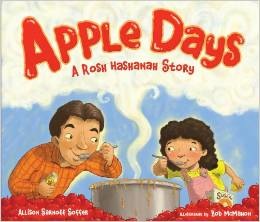 This year’s day goes on the calendar, and it seems like the whole community is looking forward to it, when a family “crisis” arises.
This year’s day goes on the calendar, and it seems like the whole community is looking forward to it, when a family “crisis” arises.
